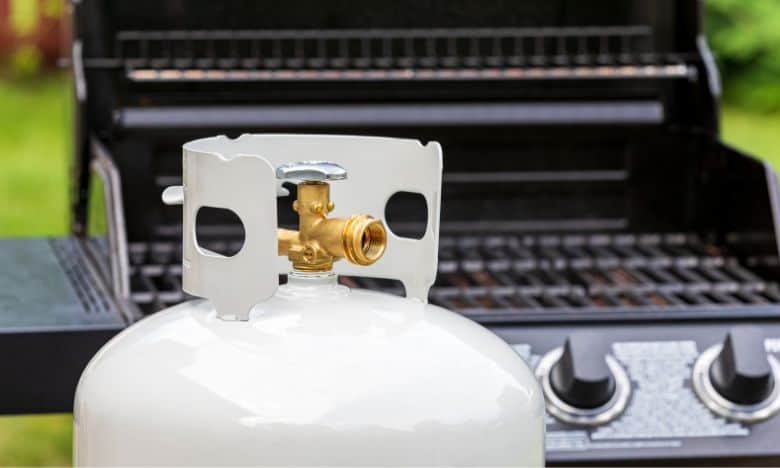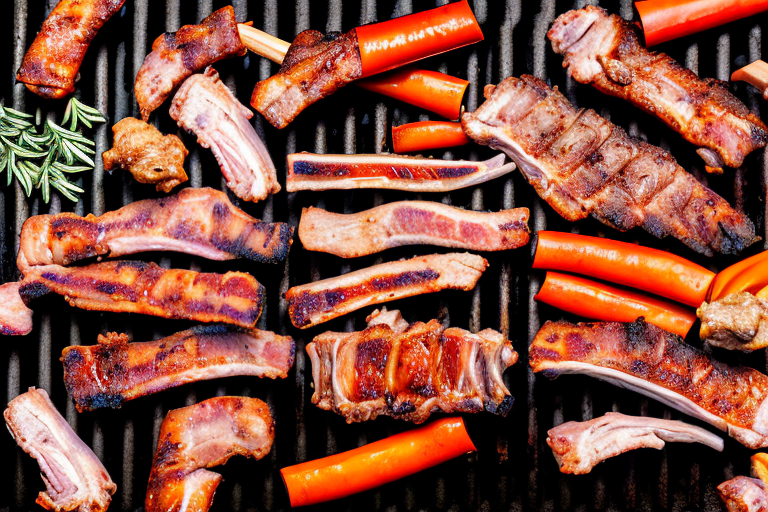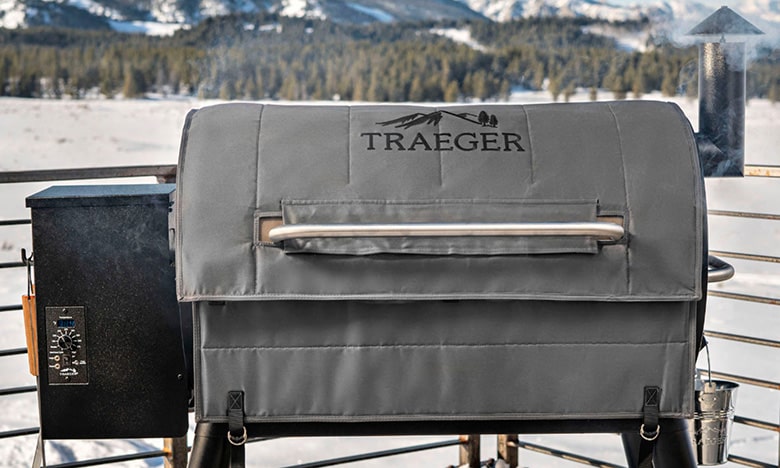It’s almost about time to get your smoker ready for grilling some fresh meat in the yard. If you haven’t tried using charcoal smokers before, then you might find it a bit overwhelming from the start. Luckily, we’re here to help you out learn how to use a charcoal smoker!
Table of Contents
How to Use a Charcoal Smoker
It’s true that the charcoal smoker has earned a reputation of being a bit challenging to use successfully. After all, it involves a bit of manual labor compared to its plug-and-play counterpart, the electric smoker.
Nonetheless, with a little bit of know-how, you’ll be able to masterfully use charcoal smokers with ease, allowing you to produce nicely flavored food without any problem.
What’s a Charcoal Smoker?
Before anything else, let’s first define what a charcoal smoker is.
Compared to other types of smokers or charcoal grills, a charcoal smoker works by cooking meat via indirect heat at low temperatures, depending on the type of meat you want to cook. It is a slow and long process that often lasts around 6-20 hours depending on the size of your food.
However, this “slow and low temperature” cooking can give birth to meat that’s surprisingly tender and mouthwatering. This is because this method breaks down the collagen in the muscle fibers which results in a “melts in your mouth” level of tenderness.
It gets even better with the addition of wood chips, or even wood chunks from hardwood like cherry or hickory which can introduce new, unique flavors to your meat, thus making them even more delicious.
When it comes to the components, a charcoal smoker is made up of the following:
- A firebox with legs and a charcoal grate on the bottom to keep the charcoal from falling.
- A water chamber in the middle to hold a water pan that is located between the cooking chamber and the burning coals. This can be accessed via a tiny door where you can add water to the water pan or fuel and wood chips to the chamber.
- A cooking chamber at the top that comes with a lid for containing the heat and smoke as well as wire grates for holding the food.
- Air dampers to control the flow of air so you can maintain a consistent temperature.
- An air vent at the bottom for added temperature control.
Why You’d Want to Use a Charcoal Smoker
A lot of BBQ professionals prefer using a charcoal smoker due to two main reasons:
It’s very portable
The fact that you can move it around without any hassle is a welcome convenience. Also, you don’t even need to get close to a nearby electrical outlet, and there’s no need to drag an electric generator with you all the time. Also, you can pick the cooking area you want due to its portability.
The end results have an amazing taste
There’s no denying the quality of meat you can get after several hours of smoking using a charcoal smoker. If you can look past that long cooking time, then the taste of the meat you can get is surely worth the wait.
Besides, despite being a bit harder to use than its counterparts, you can actually learn how to use a charcoal smoker fairly quickly. If possible, however, we recommend trying out a friend’s charcoal smoker before you decide to buy one so you can determine whether the learning curve is manageable for you or not.
But if you don’t have access to one, then we’ll gladly walk you through this tutorial.
What You’ll Need Before You Start
Before you start using a charcoal smoker, you first have to make sure all of your BBQ accessories are ready. Though charcoal smoking meat doesn’t really require a lot of stuff, the presence of some items can make it way easier. Here’s are the things you’ll need:
Wood chunks
Wood chunks from hardwood like hickory and cherry can add a delicious, smokey flavor to your meat. Ideally, you’d want to use wood chunks instead of wood chips as the latter will burn up too quickly.
When choosing which wood to use, always remember that different woods come with their own flavor profile. Not all woods are suitable for smoking meat. Don’t ever use sappy wood as it comes with unpleasant-tasting terpenes which can only ruin the taste of your food. We don’t recommend just using any hardwood either, as only certain types of hardwood are suitable for smoking.
Check out our guide on the best wood chunks for smoking to get the full rundown of do’s and don’ts when it comes to using wood in your charcoal grill.
Wood types like apple, cherry, alder wood, and hickory feature a mild flavor that can work with most meats. However, if you want a stronger flavor, then you can go for either Pecan and Mesquite.
Lighter and firelighters
We’d recommend using a non-petroleum firestarter for your charcoal smoker. This is because petroleum firestarters can introduce an unpleasant taste into the charcoals which can make their way into your food.
For the lighter, it’s best to use a long-nosed BBQ lighter to make sure your hands are at a safe distance from the fire.
Charcoal briquettes
While lump charcoal can get the job done, charcoal briquettes are the best charcoal option since they are able to burn more consistently. This ensures that the heat will remain consistent throughout the entire smoking session.
Charcoal chimney
Despite being an extra investment, a charcoal chimney starter makes for an excellent means of starting your smoker. Find the best charcoal chimney starters here!
Meat thermometer
A good-quality meat thermometer ensures that you can monitor your food and make sure it won’t overcook. If you have extra money to spare, we highly recommend buying a leave-in meat thermometer so you can still monitor the temperature even up to 300 feet away via wireless data transmission.
Grill tongs
You’d want to prepare some long, fireproof tongs so you can flip and move around your food while in the smoker. This makes sure that they’re properly exposed to the smoke and that you can remove ash off the lit coals to keep them burning consistently.
How to Use a Charcoal Smoker
Once you’ve got everything ready, now’s the time to start smoking. Here’s how:
Step #1: Get Your Fuel Ready
As mentioned, we highly advise using charcoal briquettes instead of lump charcoal. Not only is the latter inconsistent, but it also burns too hot for smoking. Light up around 5-10 briquettes in the charcoal chimney. These will be your starter coals. Meanwhile, in your smoker’s charcoal chamber, place the remaining charcoal briquettes.
Then, create a well in the center for the starter coals. Once the starter coals are covered in grey ash, place them in the center of the briquettes. This allows the starter coals to slowly burn the briquettes around them.
Also, this low but constant burn makes sure that you can control the smoker’s temperature for hours without the need to refuel. You can also add some wood chips or chunks during this step.
Step #2: Fill the Water Pan
Get the water pan and fill it with cold water about halfway through. This makes sure that you can provide more moisture inside which keeps your meat moist. It also helps maintain the desired temperature inside the smoker.
Step #3: Ensure Proper Temperature Control
This can be a bit tricky at times, so make sure to pay attention.
Ideally, you want to maintain the smoking temperature between 220 and 250 degrees Fahrenheit. You can use the dampers which are located at the top and sides of your smoker to maintain the temperature and control the airflow as much as possible. You should also use your digital meat thermometer to check if the temperature is either too low or too hot.
You have to make sure that the temperature inside the smoker is steady before you add the meat. This ensures that the meat will turn out as juicy as possible after the smoking session is done.
Smoking meat at such a low temperature offers two main benefits. First, it makes sure that the smoke has enough time to flavor the meat. Second, it makes sure that the meat is naturally tenderized.
If you find that the temperature is way too hot (more than 250 degrees), then you can use the vents or dampers to moderate it. You can also use one of the bottom vents completely. Just make sure not to close all of the vents as they will extinguish the smoker.
However, in the event that the temperature gets lower than the recommended range, you might have to add coals or even move them around so they can burn hotter. This is particularly true if you’re cooking large meats like a whole turkey or ham.
As soon as the coals start cooling down, what you need to do is stir the briquettes and remove any ash off the coals. For very long smoking sessions, you might have to relight new coals in your chimney starter then add them to the coal chamber.
Step #4: Place the Meat Inside
Now that the smoker has a steady temperature, you can then start adding the meat inside. Basically, you have to place it directly on the grilling grates. For the larger meat, make sure to place them as close as possible to the coals.
If your smoker comes with upper and lower grates, place the meat you want to be smoked on the lower part. Meanwhile, place the other food you want to be smoked on the upper grate. To start smoking, simply close the lid of the smoker so that the vents are all over the meat.
There’s one rule of thumb you should remember here: make sure to leave the meat to cook for at least a few hours before opening the smoker.
Also, make sure that there’s a thick stream of smoke around your food at all times so that they can absorb the flavor properly. Some pitmasters will go for the “3-2-1 rule” which involves leaving the meat to smoke for 3 hours, wrapping it in aluminum foil after for 2 hours, then removing the foil so the meat can develop a crisp exterior during the last hour or so of smoking.
Step #5: Wait for Your Meat to Cook
The meat smoking process is a long and slow one, often taking several hours depending on the size of meat you’re cooking. For example, a rack of ribs would require anywhere between 6 and 7 hours to fully cook while a whole turkey meat cooks around 18 hours, sometimes even more.
This is where the thermometer can come in handy as it will help you determine whether your food is already cooked or not.
There’s just one rule of thumb for this: slow and steady wins the race. You should also be paying attention to the temperature of the smoker and make sure to keep it nice and steady. Adjust accordingly whenever you notice that heat escape from the smoker or if the temperature is too hot.
Once the smoked meat is cooked, simply remove the lid, take out the meat using tongs, then allow it to rest. Enjoy!
Additional Smoking Tips
Now that you’ve learned how to use a charcoal smoker through the following steps above, let’s now talk about these few tips that will make your smoking session a lot easier:
Start a fire on the chimney starter
Lighting up several briquettes in the charcoal chimney starter then transferring them over to a separate pile of unlit coals in the charcoal chamber is actually more convenient than lighting them inside the chamber itself.
Always keep a supply of lit charcoal on standby
There can be cases where indirect heat inside the smoker is reduced and will need more charcoal to heat up. In this case, having some hot charcoal briquettes ready can be really handy.
Wear protective gloves
Don’t ever touch the smoker with your bare hands. Make sure to always wear heat-proof gloves as the temperature of the smoker can get pretty hot when smoking.
Oil the cooking grate
Make sure that your food won’t stick onto the grill grates by applying some vegetable oil to them. Even just a little oil can go a long way.
Don’t cook too many meats at the same time
If you’re a beginner who’s still figuring out how to use a charcoal smoker successfully, then it’s always a good idea to start with a small amount of meat. Then, as you become more experienced, you can gradually add more meat into your smoking session, or experiment with different meats, until you master it.
How to Maintain Your Charcoal Smoker
At this point, you should already know how to use a charcoal smoker without any problem. The next important thing you should learn is how to maintain it so you can use it for the many smoking sessions to come.
Keep in mind that frequent smoking can cause grease and carbon to build up inside the smoker. Apart from affecting the performance of your smoker, they can also affect the flavor of your smoked food. The worst part is, these can also cause mold to start appearing all throughout your smoker.
Therefore, as much as possible, you want to clean your smoker whenever you can. Even just a single deep cleaning session a year can go a long way in making sure your smoker can retain its performance for as long as possible.
Before you start smoking, we highly recommend cleaning the smoker grill to remove any grease that was left behind from your previous smoking session. You can scrape any residue on the cooking grates, use a wet sponge to clean the grill, and get rid of ashes.
Here are other maintenance tips you can follow:
- Remove any carbon and grease buildup from the cooking grates. You can simply use a bit of crumpled aluminum foil for this. You can also remove any ash or buildup in the charcoal grill.
- Clean the thermometer probe if your smoker comes with a built-in thermometer. You can use a damp sponge with a mild soapy solution for this. Just make sure not to let water get inside the dial area since it can affect the accuracy of the thermometer.
- Check the inside of the chamber for any buildup of carbon and other by-products. This has the tendency to fall down into your food, which can affect its taste and even contaminate it. To clean it up, simply use a wire brush and a vacuum.
Ready to Start Smoking?
Once you’re comfortable using your charcoal smoker to smoke meat, you can then try experimenting with different techniques to get that distinct flavor you’re looking for. It’s part of the learning curve and is also quite a fun activity to do.
You can find tons of techniques out there as far as charcoal smoking goes, so don’t be afraid to try them out. However, it’s always worth knowing the basics so you can find the perfect smoky greatness for you. Whether you’re using a small charcoal grill, a drum smoker, or a hibachi grill, we’re confident you’ll have grea
This lengthy article should cover everything you should know about how to use a charcoal smoker, what tools you need to make smoking a lot easier, how you can make the smoking process even more convenient, and how you can maintain your smoker.
Always make sure that you only buy fresh ingredients for your meat, as well as good-quality coal briquettes. Lastly, as mentioned earlier, don’t be afraid to experiment. The more you practice various smoking techniques, the better your chances of enjoying the best-tasting results.






